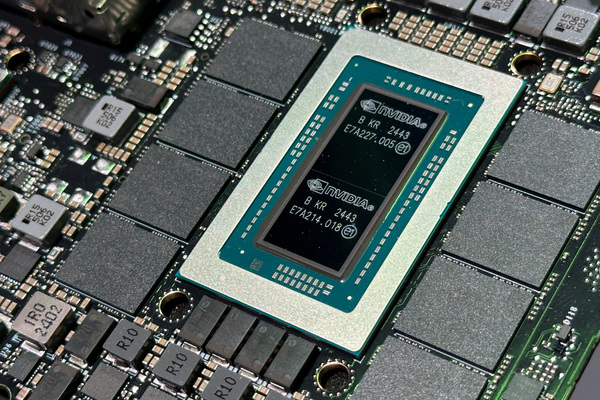Tool, teammate or threat? Experimenting with AI in digital product design
Sponsored by ustwoIs AI a tool, a teammate or a threat? Why humans matter more than ever in digital product design.

Just a few years ago, AI was, on the whole, a theoretical ambition; today, it’s a daily reality reshaping industries, redefining workflows and raising fundamental questions around the role of creativity itself. As these tools mature, so does the way people work with them. Digital products – and the processes we use to make them – were once more linear and predictable. Now, with the infusion of new technologies, processes are marked by greater complexity and a growing sense of uncertainty.
Building digital products using AI is about creating an environment whereby both human and machine can flourish. In practice, this becomes a process of experimentation, refinement and rethinking how ideas take form. The question ultimately is no longer whether AI can build digital products, but rather whether it can help us build something meaningful, robust and repeatable.
That question came into sharp focus through a recent proof–of–concept for Soph’s Plant Kitchen, a high–protein, plant–based meal planning venture. The brief was to develop a minimum testable product, designed to test user appetite, retention and the commercial viability of curated meal subscriptions. But under the surface, the project served a deeper purpose for ustwo: to explore AI’s role in modern product development, from ideation to delivery.
The risk of sameness
One distinguishing factor of AI is that it excels in pattern recognition – but not at originality. This strength allows it to generate content that mimics what already exists, but makes it inherently limited when tasked with producing ideas that break from convention.
The output often feels mass produced – efficient and consistent, but devoid of uniqueness. Trending towards a median results in designs that may function well, but offer little in the way of character. Across digital landscapes, this tendency produces a “sea of sameness” with interfaces that look indistinct. When modern AI tooling is used as a shortcut, design becomes generic by default – this is a huge boost if you have no design skills, but if you are an expert practitioner making exceptional products it is limiting.
The implication – and general perception – is that this limitation is a strong argument against applying AI to product development cycles, reinforcing the belief that the experiential gap it creates simply can’t be closed. But AI’s output is, by definition, an average of its training material. Without human intervention, AI–produced work will not break from convention.
That’s where the principle of human–in–the–loop becomes not just a practice, but essential. Creative judgement, emotional nuance and cultural relevance aren’t the byproducts of probability – they require perspective. These are the defining elements of exceptional products. Human involvement keeps the process tethered to purpose. In a world where these tools can produce a hundred variations in seconds, training it to work deliberately is a defining factor in its useful application to product stacks.
Tools, not teammates
Treat AI like a tool and it delivers. Trust it like a teammate, and it quickly falls short. Its strength lies in tactical deployment – executing well–defined tasks without the weight of complex, human–centred decision making. Despite their promise, AI tools carry blind spots – gaps in nuance, context and meaning – that must be actively acknowledged and addressed throughout the build.
This tension between what AI can produce and what a product truly needs reveals the hidden cost of speed: a widening distance between idea and execution – especially execution that meaningfully meets user needs. Products that are simply “good enough” won’t ultimately resonate and endure.
Real productivity no longer hinges on acceleration alone, but on alignment. The best tools don’t just produce more – they help teams move with intention. This is where agentic tooling becomes essential – not because it accelerates output, but because it supports more deliberate, adaptable workflows.
Designing with AI isn’t a one-prompt miracle, it’s a dialogue. It takes multiple prompts and interventions to shape something worthwhile. For now, there’s still a point where it’s simply faster for humans to take over. The goal isn’t simply efficiency; it’s building systems that honour human judgment and ensure people remain meaningfully involved in the process.
Nowhere was this more apparent than in the build of the Soph’s Plant Kitchen web app, where generative design tools such as UIzard and v0 played a key role. While they provided a fast, effective starting point for UI exploration, the results consistently fell short of the mark, getting the product about 80 per cent of the way there. But how far can you go with 80 per cent? For products that strive to be exceptional, the final 20 per cent means visual harmony, creative finesse and attention to detail, all things that have human touch in common. A key learning from the project was knowing when AI output was “good enough”, and when it needed intervention. Every project presents a choice: accept what’s been generated, or push it further. That decision defines quality.
This captures the core of AI-enabled creativity: knowing how to use the tools effectively, and when to step in to elevate the output. The roles within digital product teams aren’t being diminished. They’re being reframed – to centre curation, critical judgment and the careful stewardship of AI-integrated workflows.
A product built and then rebuilt
The initial results of building with AI are undeniably impressive – particularly its ability to rapidly assemble features and materialise interfaces. Tools such as v0 can generate slick, clickable prototypes that turn heads when demoed early in a project.
But beneath the surface, these interfaces often lack complexity. Managing client expectations in this context requires particular care. AI-generated outputs will often outpace infrastructure that makes the product work, making it harder to distinguish what’s functional from what’s still conceptual. This disconnect places new demands on teams to clearly communicate what’s real, what’s scaffolding, and where meaningful design and development work is still needed.
This tension between how things look and what they actually are became a defining theme across the Soph’s Plant Kitchen build. While AI tools accelerated early momentum, they also exposed where human input remained essential. The project incorporated a wide range of AI tools throughout: ChatPRD was used to help generate backlogs in Linear, custom GPTs handled recipe content formatting, NotebookLM supported research synthesis and user story generation and Cursor, Figma and GitHub Copilot were used to help bridge design and development. On aggregate, these tools significantly reduced net manual overhead and accelerated production. However, the initial setup and onboarding required additional time, as introducing a new workflow and toolchain entails an inherent adoption period.
Yet closer inspection revealed a consistent pattern: most AI-generated work still required refinement, rewriting or, in some cases, complete replacement. Each gain in velocity introduced a new layer of quality assurance. Our focus moves from making to moderating, a shift from generative to analytical thinking, where critique becomes the craft. NotebookLM, for instance, shortened writing time, but only when carefully and deliberately prompted. Cursor translated design into code efficiently, but often the resulting components lacked visual polish, accessibility and the level of detail needed to achieve high-quality output.
Agentic AI helped overcome some hurdles, enabling multi-step workflows and supporting decision-making across systems. But even the most advanced tools fell short without consistent human oversight. Some decisions required more than technical capability – they called for taste, judgment and context. While AI accelerated delivery, meaningful outcomes still relied on human intervention to shape quality and relevance. The result wasn’t a product built by AI, but by people using AI as a tool – thoughtfully, critically and with intent.
Beyond the build
Benchmarking where AI can meaningfully contribute is essential to productive workflows and learning where it falls short. Experimentation is essential, not just to stretch the tools, but to shape how they serve. The more people that test these limits, the sharper the collective intuition becomes. Perhaps the most important insight isn’t about speed or scale at all, but discernment. In a world where AI can generate anything, the real shift is slowness, reflection, iteration. These aren’t inefficiencies, they are the conditions where meaning is made.
For teams navigating this new terrain, the next step isn’t about choosing between human or machine. It is about learning how to build better, together. The friction, the clean-up, the quiet moments of decision making – these point not to AI’s failures, but to its boundaries. AI doesn’t absolve: people remain accountable, and we can’t offload ownership to automation if quality suffers. There’s balance at play and it’s human perception that keeps the scales from tipping.
by Léo França, Full Stack Developer, and Jessica McCarrick, Lead Marketing Producer at ustwo

Business Reporter Team
Most Viewed
Winston House, 3rd Floor, Units 306-309, 2-4 Dollis Park, London, N3 1HF
23-29 Hendon Lane, London, N3 1RT
020 8349 4363
© 2025, Lyonsdown Limited. Business Reporter® is a registered trademark of Lyonsdown Ltd. VAT registration number: 830519543





